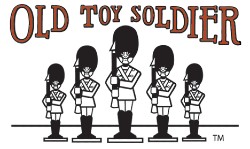- Introduction
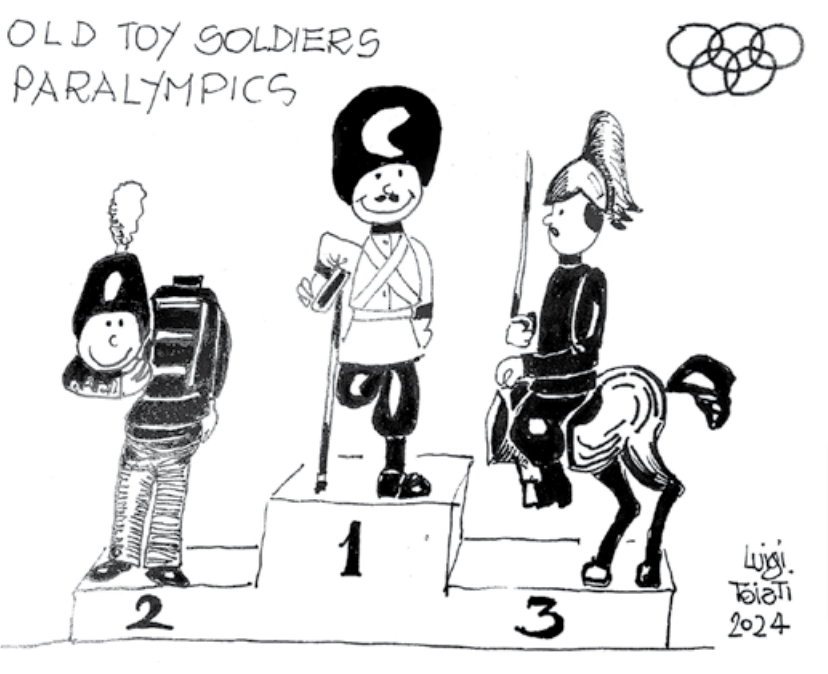
The summer Olympic Games held this year in Paris inspired renewed interest in sporting figures. M Broquet published an interesting piece (Le Jeu des Jeux, Antiquités Brocante HORS SÉRIE 2024, pp 79- 84) in which he sets out some of the sporting figures that could be used to replay events in the games. In an idle moment I wondered how many of the sports now included in the Games could be represented by miniature figures that we all love to collect. A number of the images in his original article were supplied by Gisbert Freber, who has kindly offered them for reproduction here. I have found many more images online and in particular in Old Toy Soldiers archives.
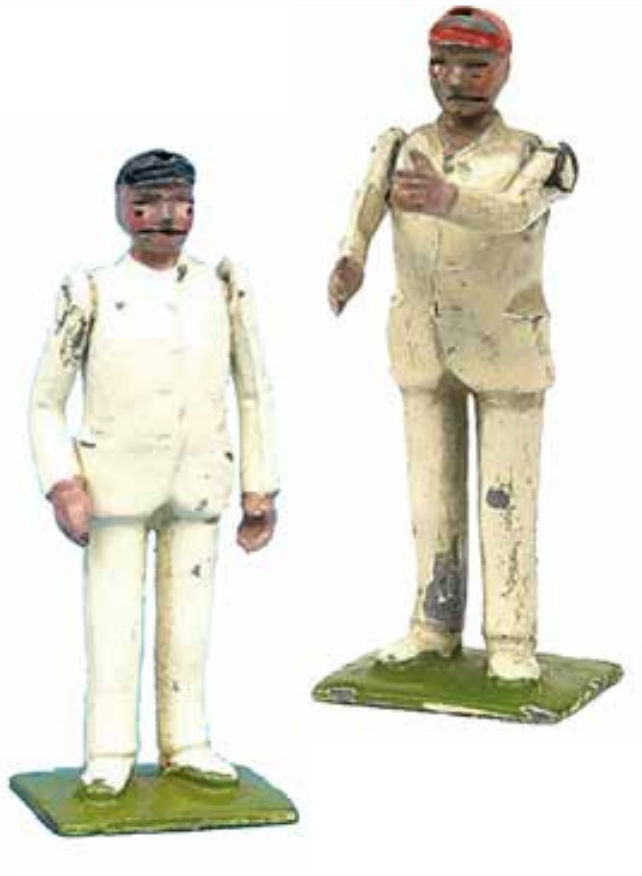
Australian caps
It soon became apparent from a quick online search that there is a huge market in Modern sports figures of all kinds, many tailored to represent famous individuals. Covering this area would alone
require many pages. I decided to narrow things down and maintain a focus that would be of interest to readers of this magazine. I therefore concentrate just upon Vintage toy figures NOT Modern sports
collectables. This includes figures marketed as toys and made in lead (hollowcast and solid), aluminium and plastic. Even this has proven an enormous task. To do it real justice would require something analogous to Luigi Toiati’s book on Science Fiction figures (Italian Space Toy Figurines by Luigi Toiati, Pen & Sword Press).
So, this is just the tip of the iceberg, but perhaps it will encourage some brave soul to carry on the research and produce a new book analogous to Luigi’s, or maybe others to begin collecting along this particular theme (and complete the table that I have prepared to summarise things at the end of this article).
My first thought was to do things by manufacturer, but equally one could begin by focussing on the type of sporting activity! In retrospect the latter might have been preferable, but let’s begin at least with a few key makers and then come back to sporting themes at the end. In most cases the figures shown are standard 54mm scale. Exceptions are noted.
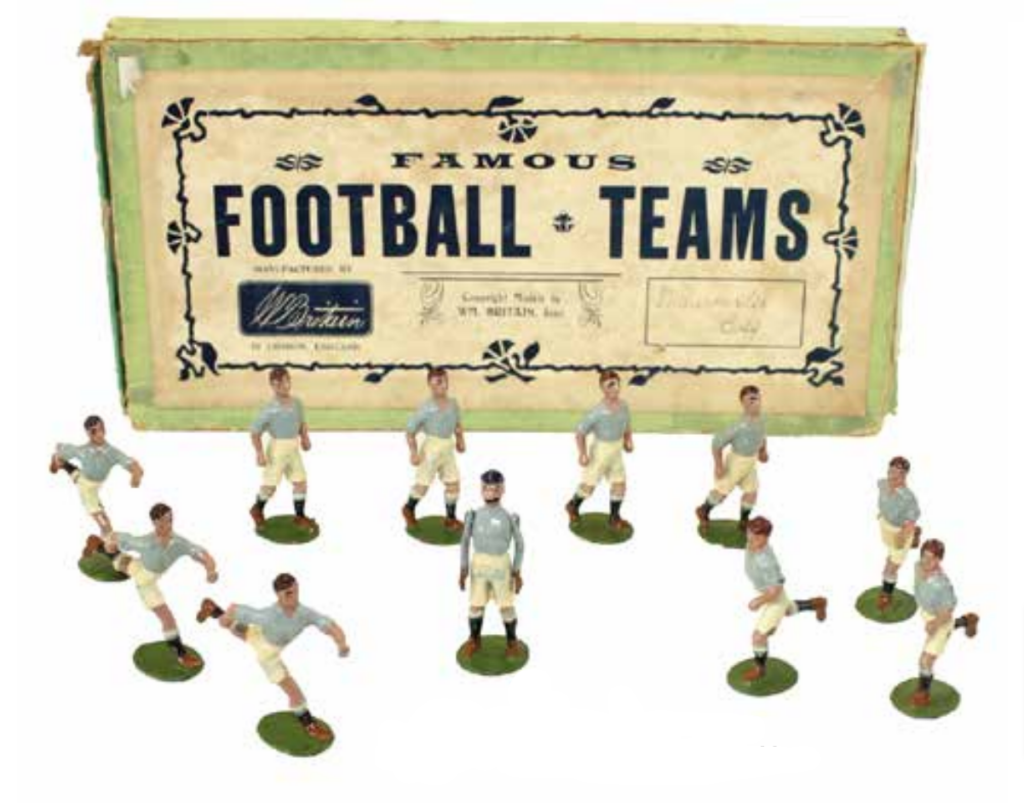
2. Britains
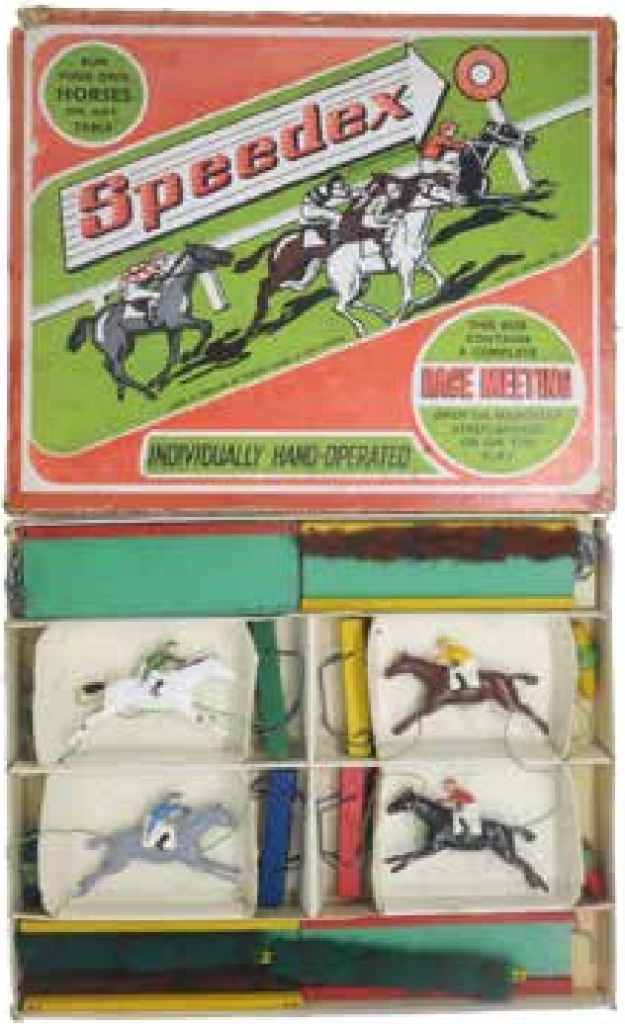
Britains toy soldiers have always been the main focus of my collecting. They are also one of the triumvirate of makers (which also include CBG Mignot and Heyde) that account for the vast majority of vintage toy figures sold in Old Toy Soldier and similar auctions. It seemed to make sense to start my research with them. However, it soon become clear that sporting activities were not a priority for Britains. Their earliest venture into sporting figures was to produce some rather staid Cricketers. These were based on the Stoker figure from their series of civilian figures designed to appeal to model railway enthusiasts. Britains simply repainted the figure in cricket “whites” – not their most exciting piece of sculpting. With the simple addition of blue or red caps these figures were able to represent England or Australia.
This rather unexciting sportsman was the company’s only venture in this field apart from the rather more adventurous Football or Soccer series (introduced in 1904). These included a full set of 11 players in action poses. The players were also accompanied by a referee and linesman to ensure fair play, as well as goal posts and corner flags. Compared with some other makers, these figures were rather pedestrian in pose (especially the rather staid goalkeeper, see below for more details!).
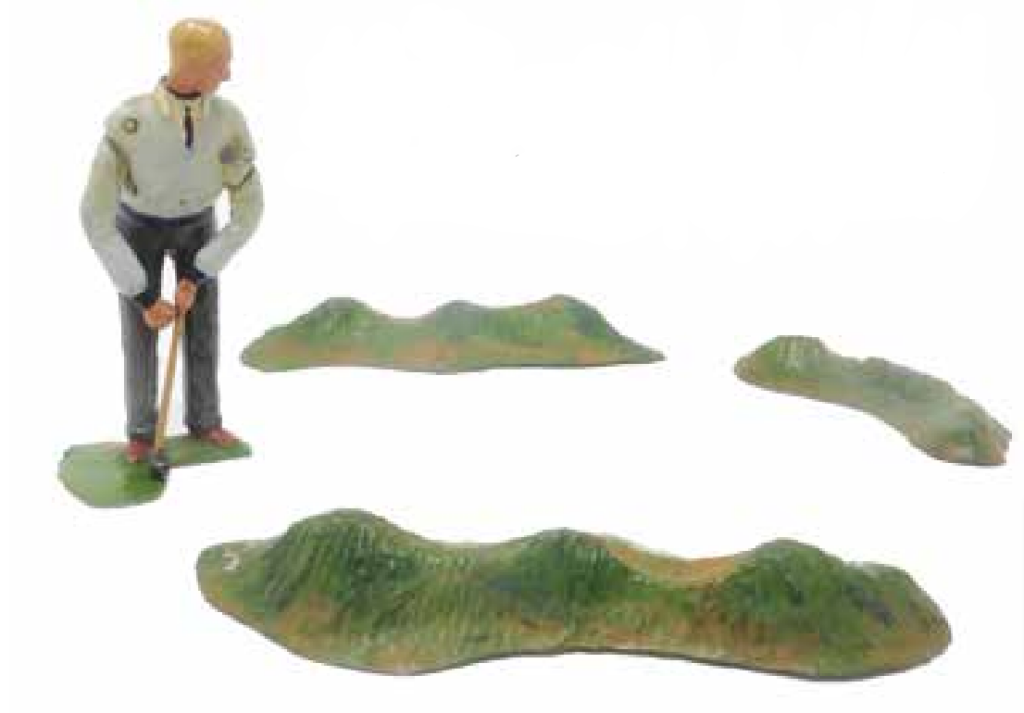
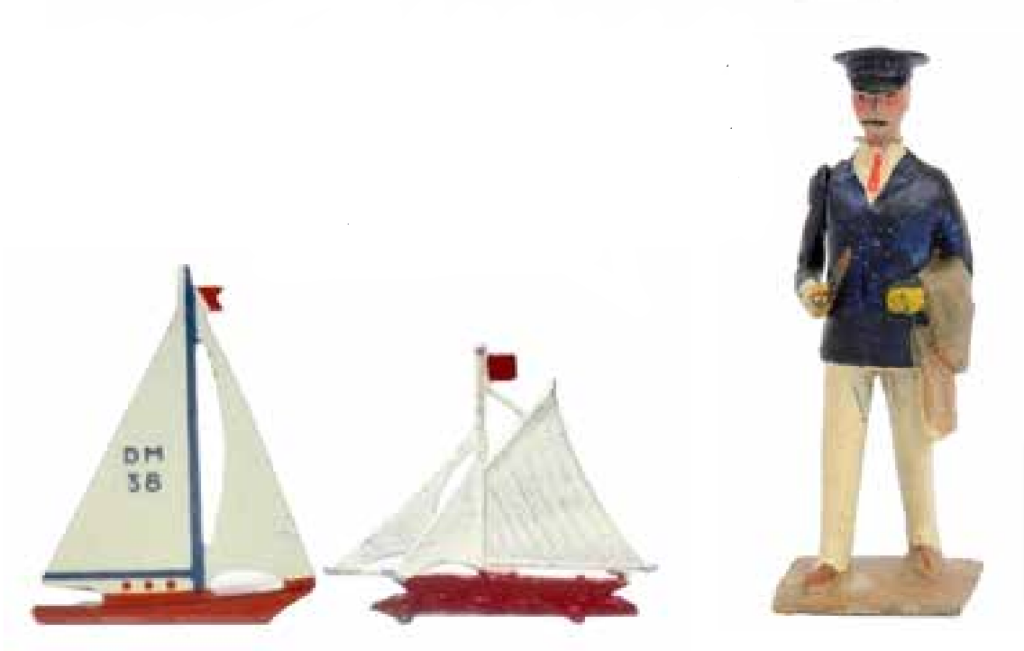
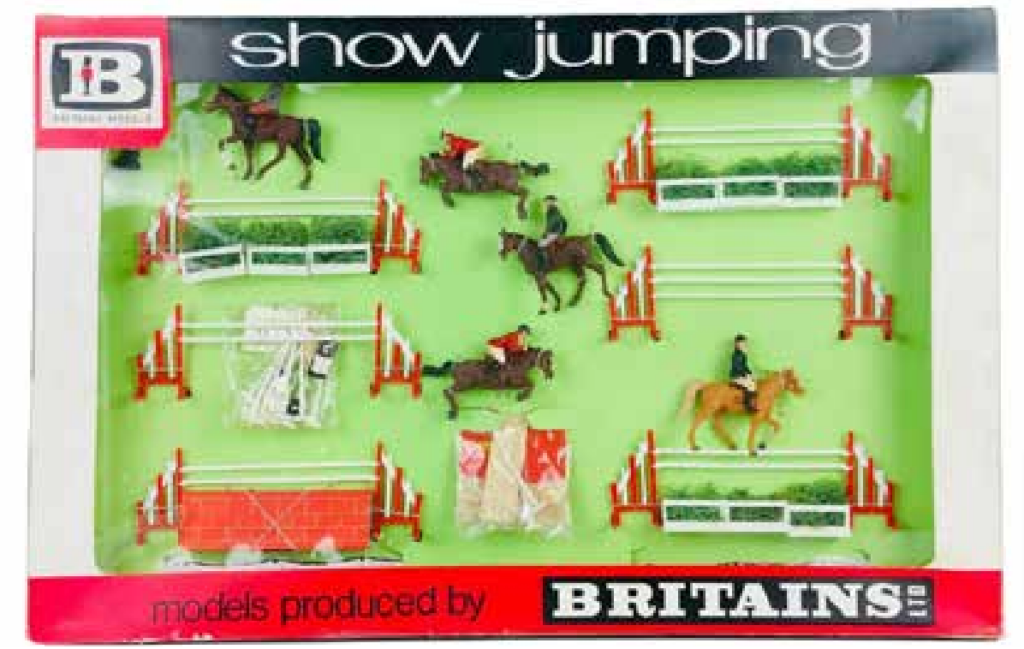
Herald Range, but continued to be sold under various branding changes
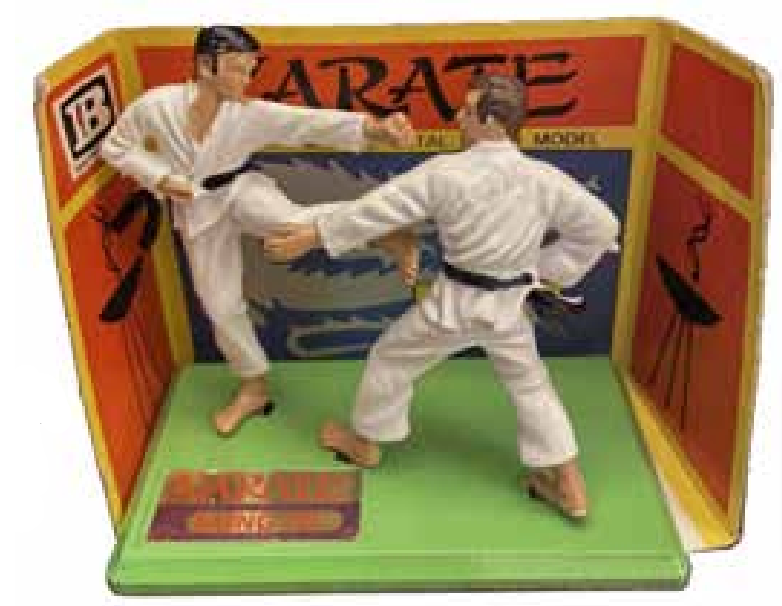
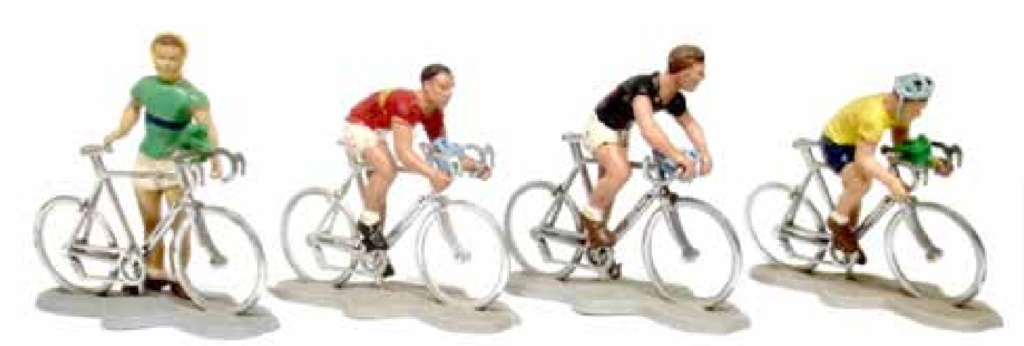
3. CBG/Mignot
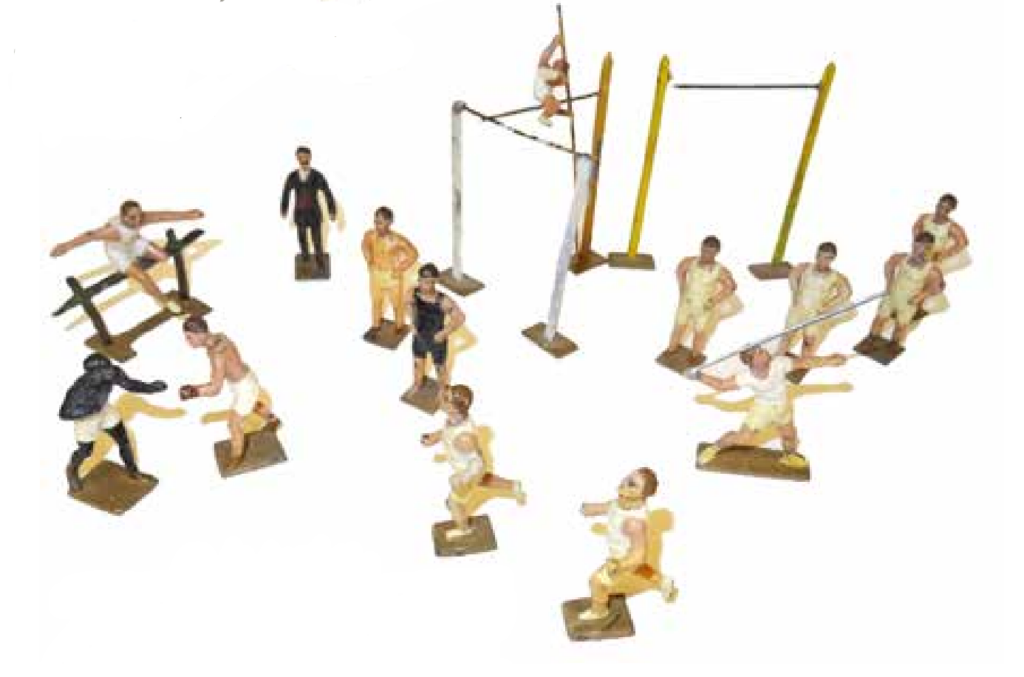
CBG / Mignot dominated the toy soldier world in France just as Britains did in Great Britain. Even a cursory examination of books such as Cristian Blondieau’s (Soldats De Plomb & Figurines Civiles: Collection C. B. G. Mignot, published by Kepi Rouge, Paris, 1993). Soon provides evidence that this French company paid a great deal more attention to sporting matters than did Britains. Perhaps this should be no surprise as the French were the instigators of the modern Olympics, which began in Athens in 1896.
Over their long history, CBG / Mignot have probably covered almost all sports, including field and track athletics, and many winter sports, as well as most popular team and individual sports such as football, tennis and many more. They have also covered some more obscure sports such as Chistera / Basque pelota, a game involving a wicker basket and very hard ball! Cycling, Motor racing and Water-skiing have also been the subject of models/toys produced by this renowned company.
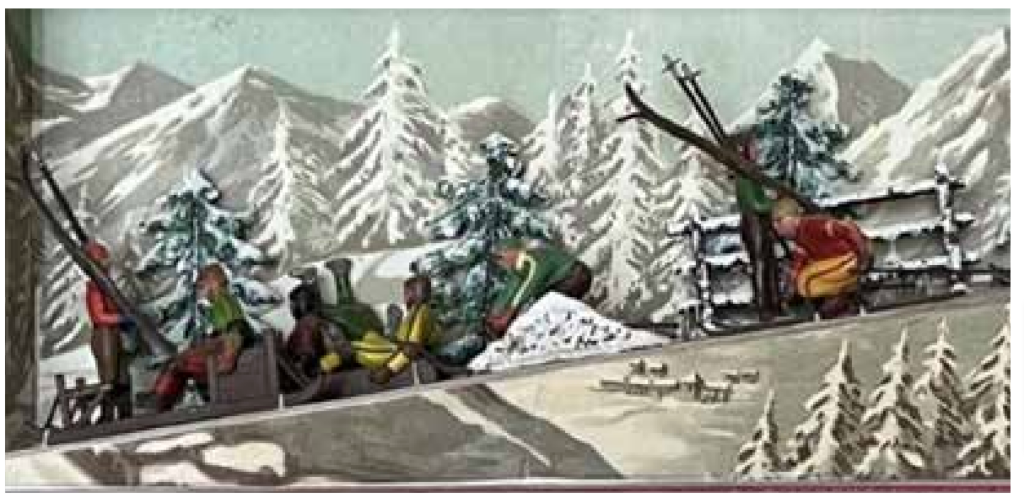
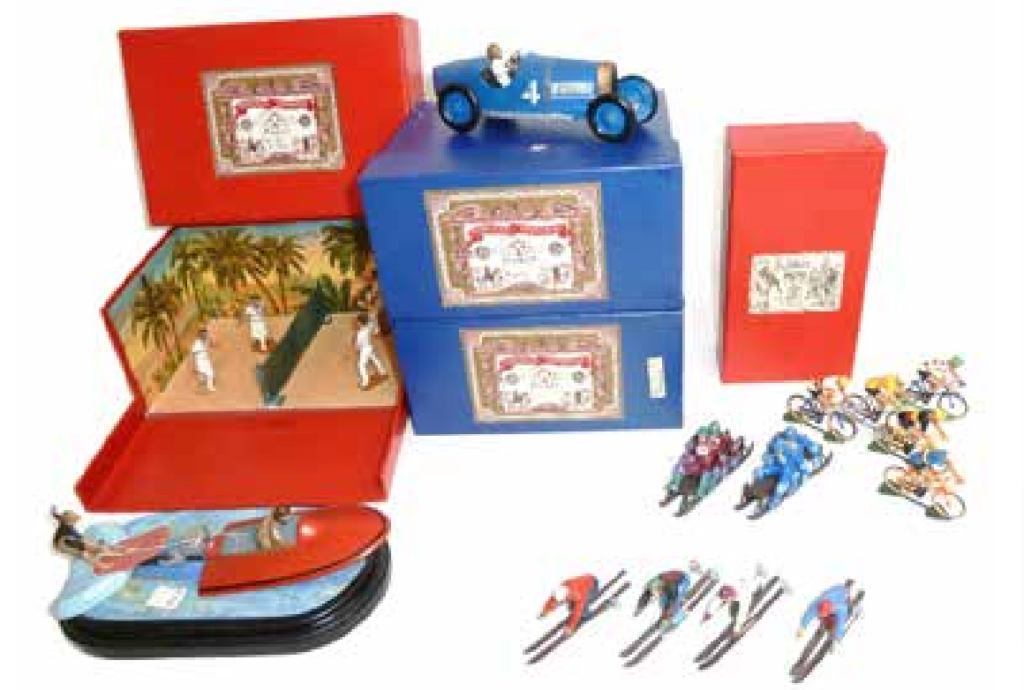
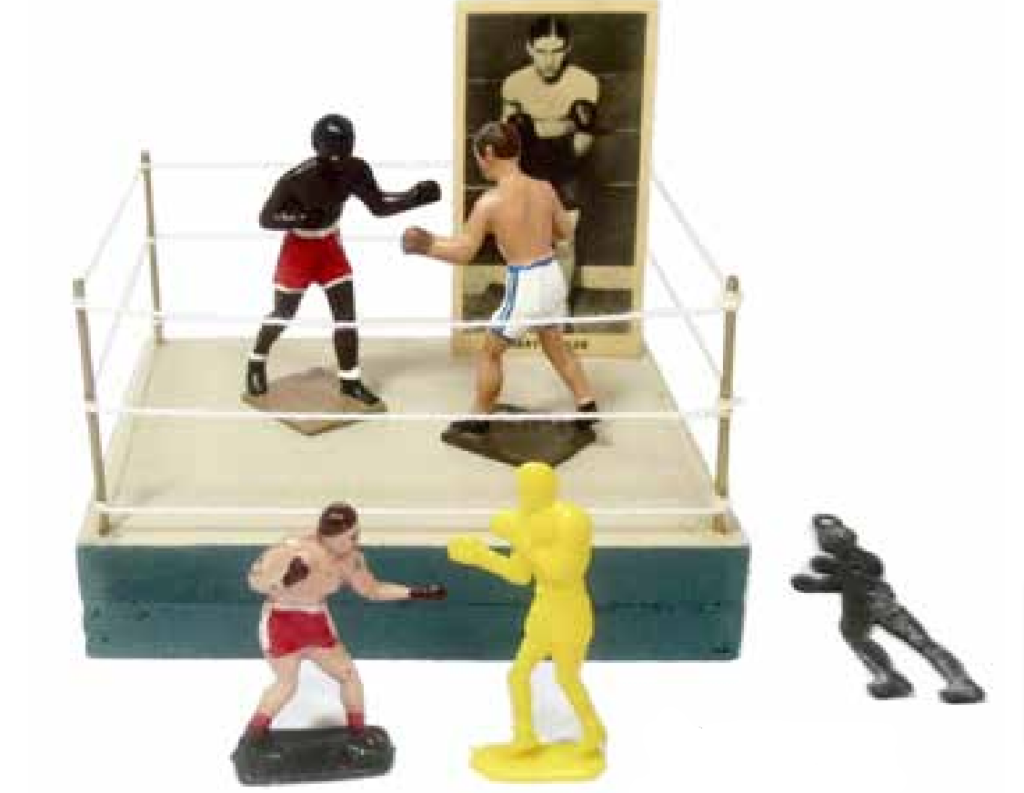
4. Heyde
The final member of the triumvirate was Heyde, who dominated toy soldier production in Germany as Britains and CBG / Mignot had done in Britain and France. Over the many years that the Dresden factory was in operation they produced many figures in the sporting category. This included many of the sports we have already covered, including: Golfers, Tennis players, Cricketers and Footballers.
One of their earliest sets was to commemorate the ancient games in Olympia. Gisbert Freber has provided some photos of figures from this rare set. These are all Heyde standard No 2 size. More
complete pictures of this partial set can be found in Markus Grein’s book. This includes some scenic accessories as well as a fire with a Sacrificial lamb, which fortunately no longer features in the Olympic ceremonies!
Heyde also produced many other figures that fall into the sporting category including Polo players in various scales and Rowers. The latter was also reproduced in the Knick-knack range, with Devils rather than athletes pulling the oars!
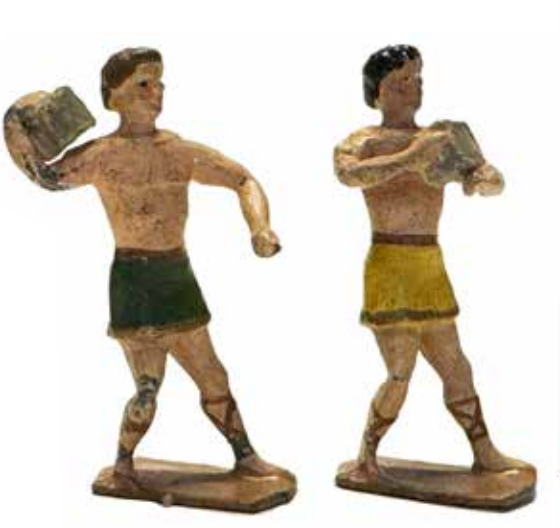
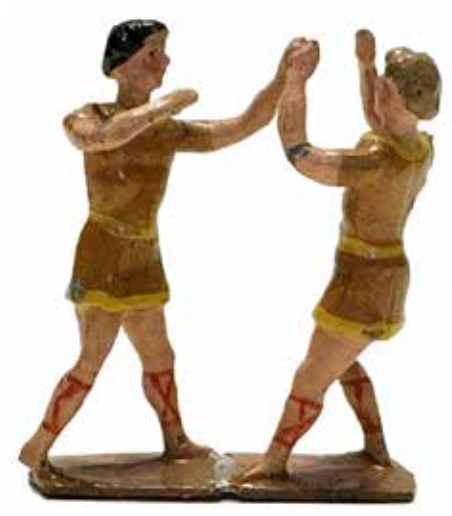
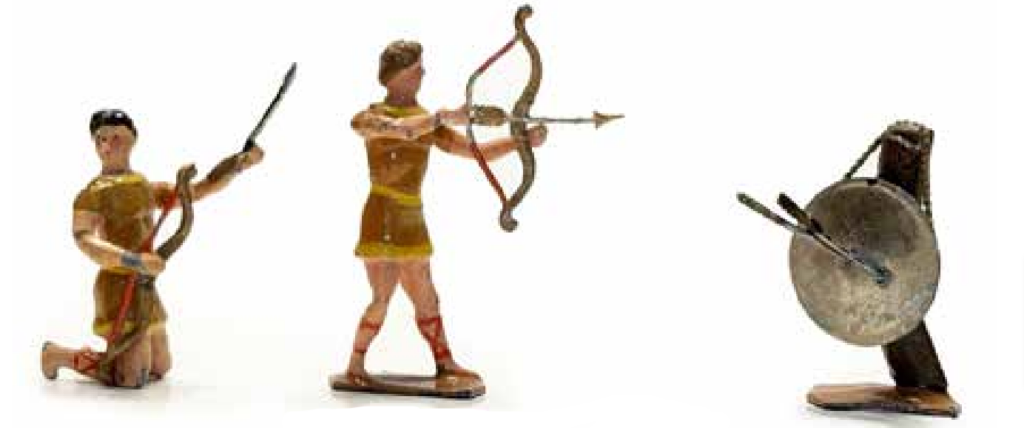
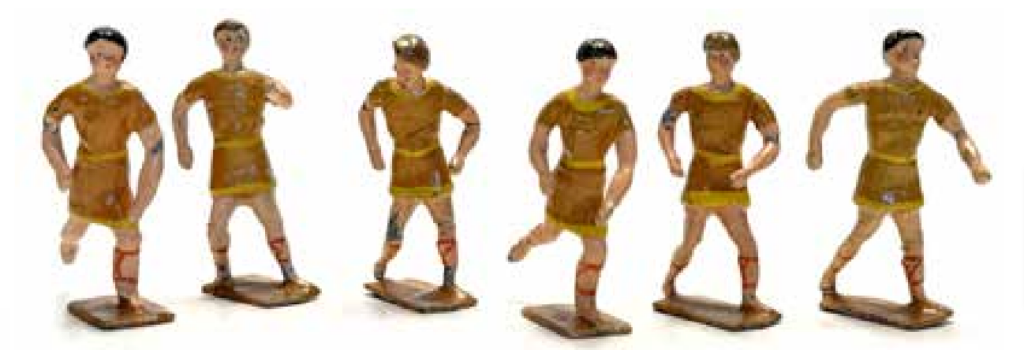
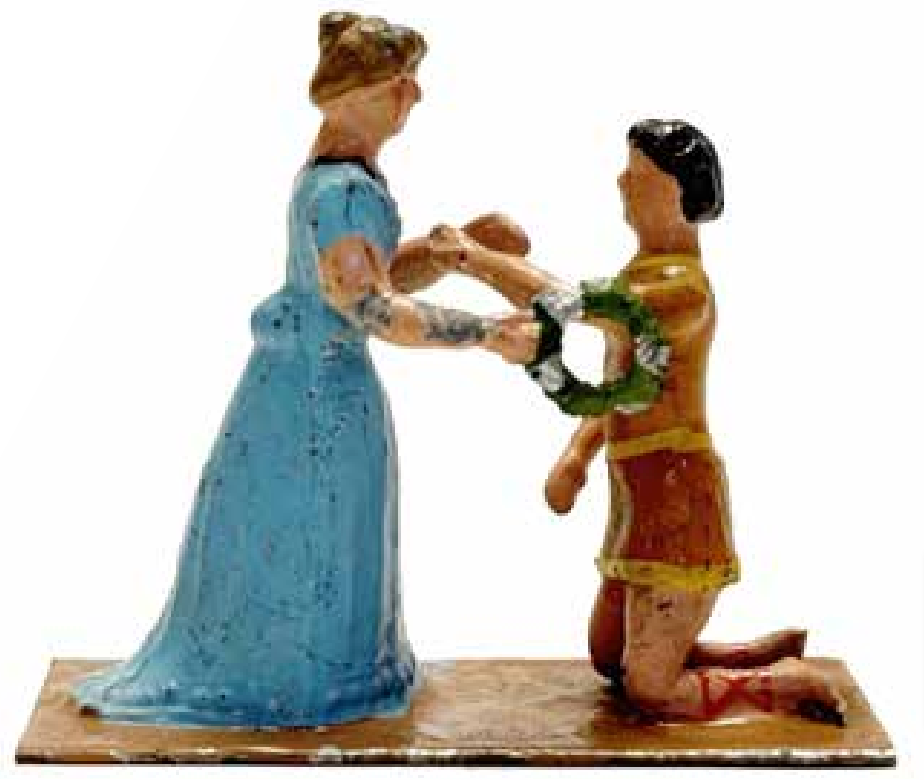
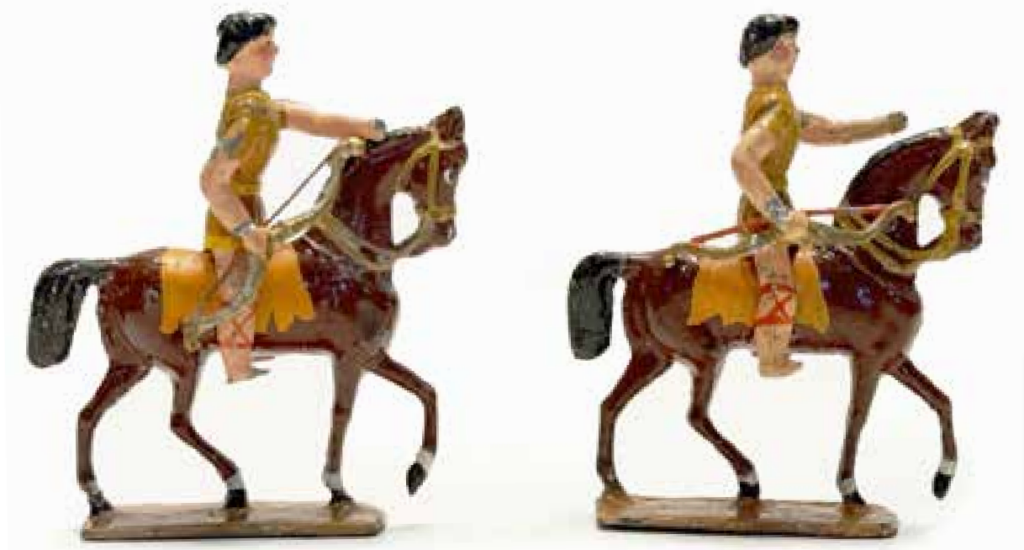
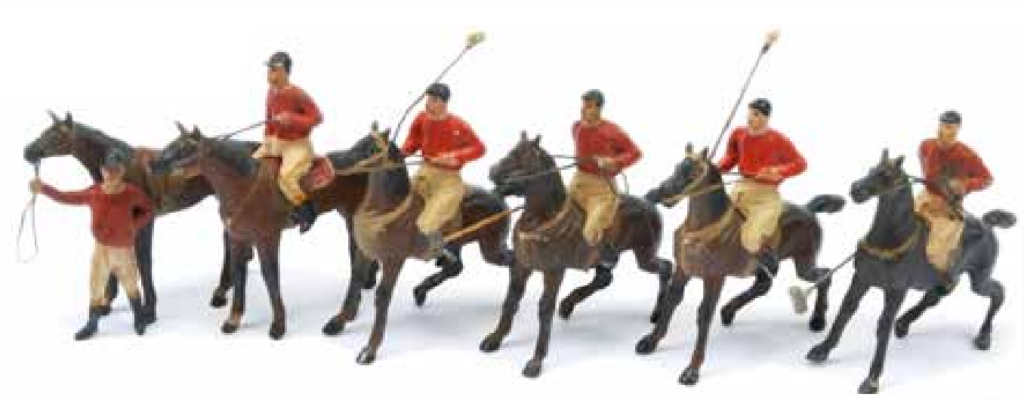
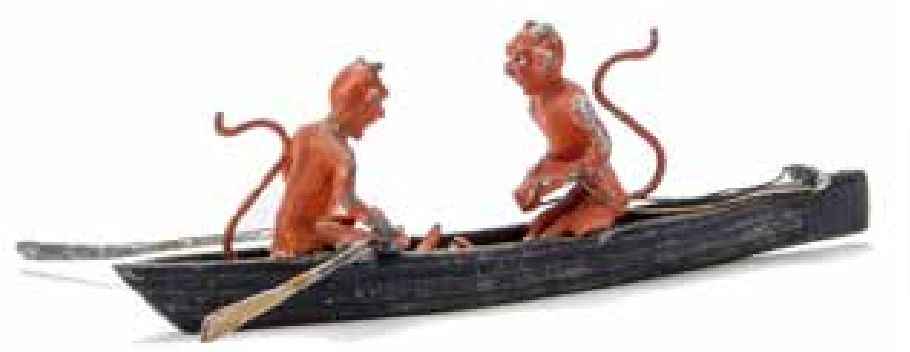
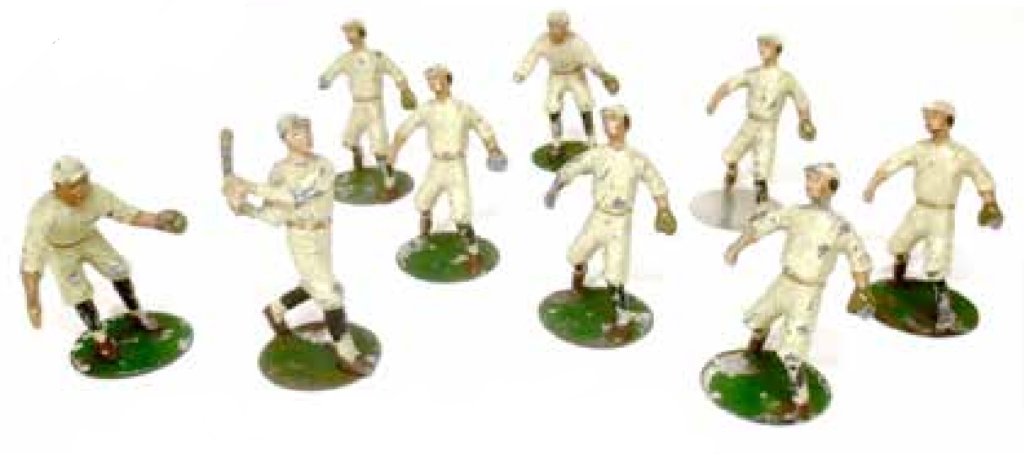
4. Other British Makers
Many other makers have focussed on sporting figures. Here is just a small selection of British competitors of Britains. These concentrated on classic sports such as:
- A very nice group of Tennis players by Hill;
- Cricketers by Pixiland Kew and Segal.
- Football (soccer) by Russell, Timpo, Segal and Keymen.
The ones by Russell were early competitors of Britains. They featured movable legs to enable the players to kick a small ball. Timpo and Segal both issued teams in a variety of colours after WW II. A Timpo team is shown below. Unlike the staid Britains figure, their goalkeeper is at full stretch diving to make a save. The Keymen footballers were an early example of sports personality figures, standing in relaxed poses rather than in action. They were featured in an article in OTS magazine, Summer 2023.
The accompanying photos show some examples of these figures.
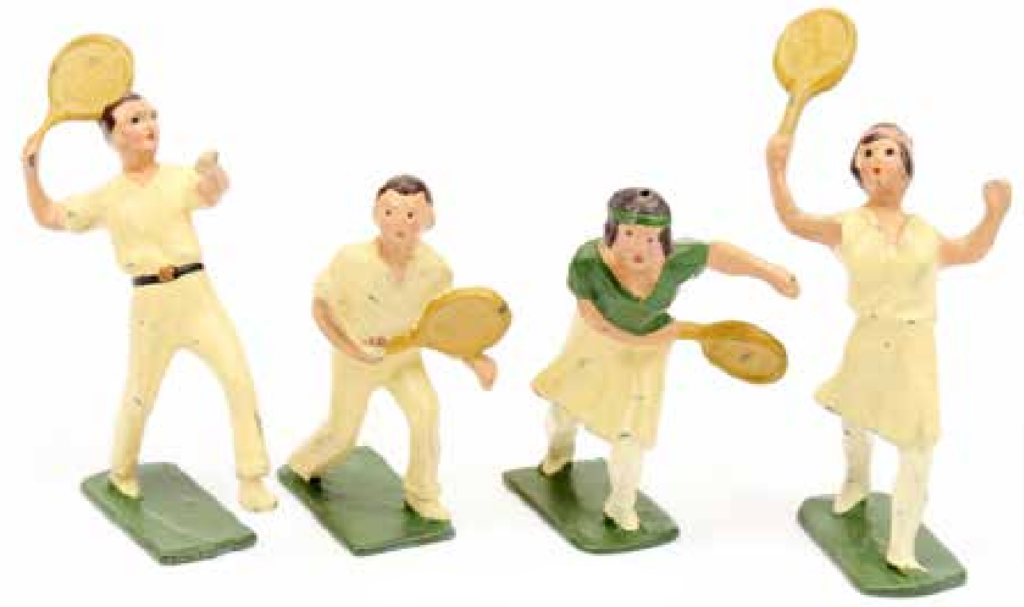

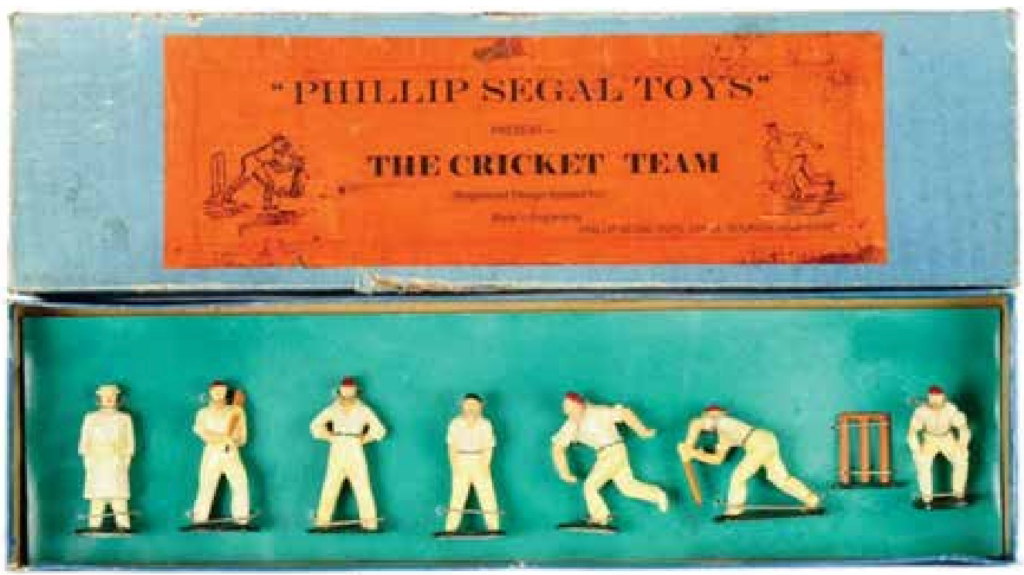
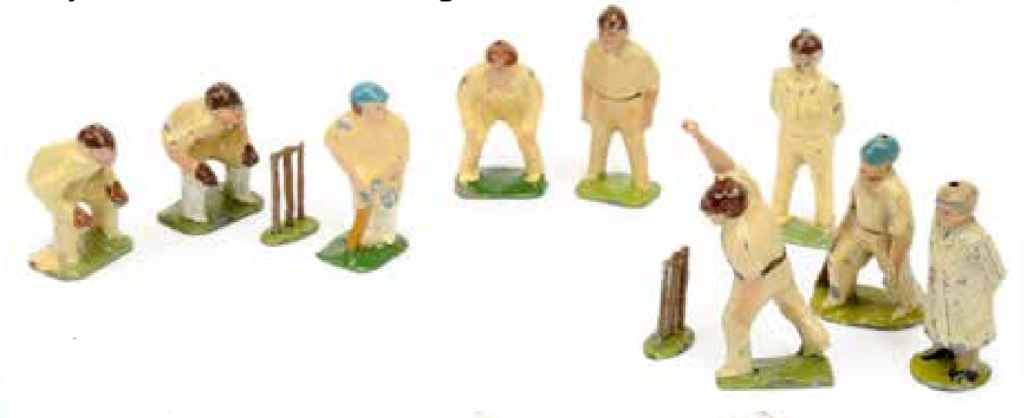
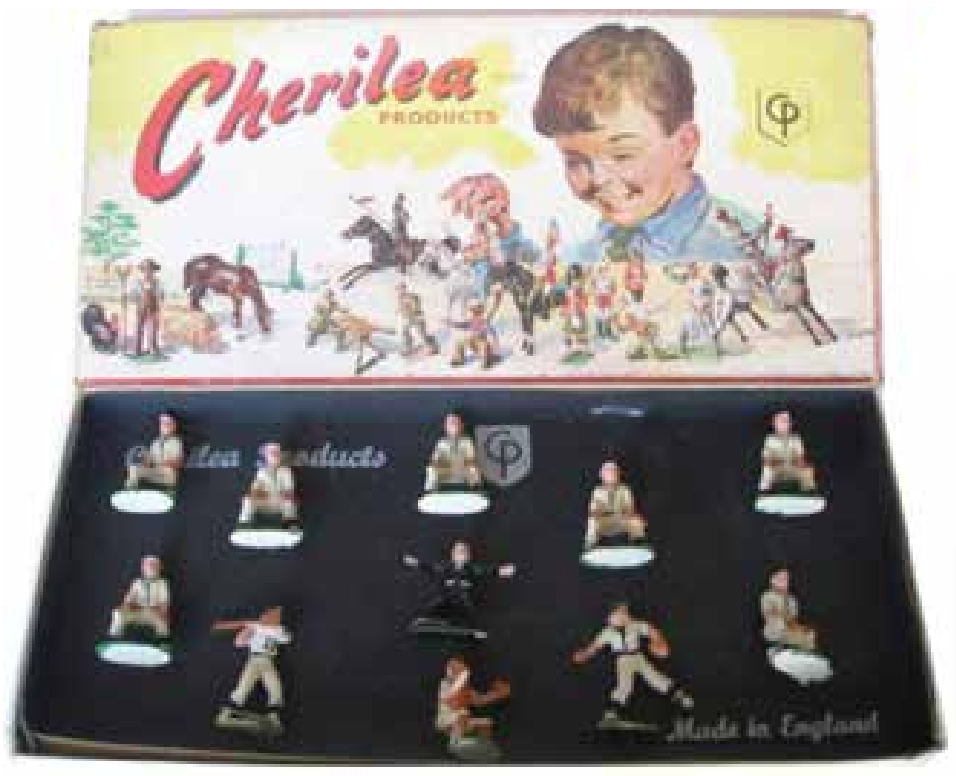
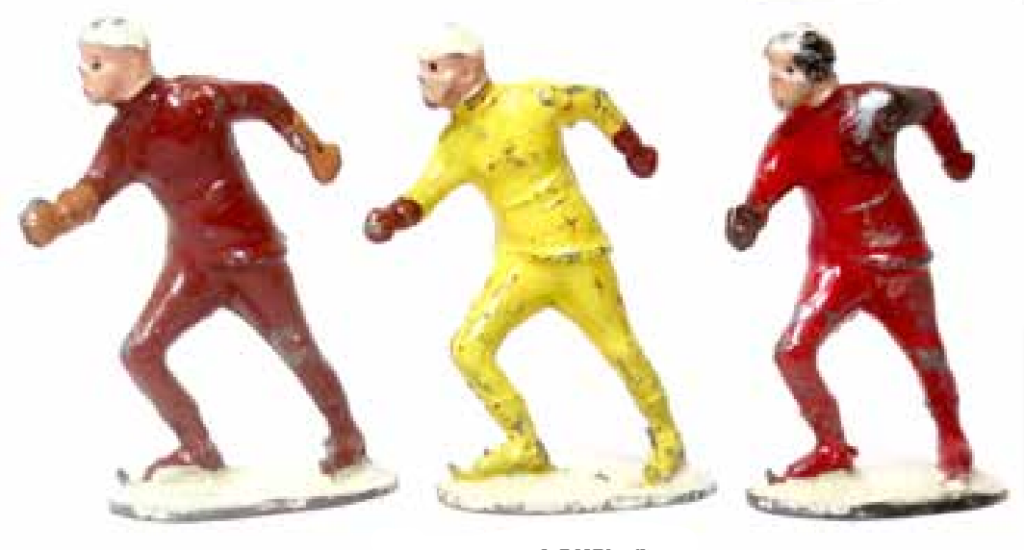
5. French Hollowcast
It would be remiss not to mention French hollowcast makers who also produced many sporting and related figures. However, I am running short of space here , so I refer readers to the excellent books by Jean Bernard Doublet and Jean-Michel Tisné, (Les Figurines en Plomb Creux (3 volumes), ISI print)), which provide an excellent summary (see especially Volume 1, pp96- 97, Volume 2, p 71 and Volume 3, pp 101- 103). This includes Gymnastics, Boxing, Winter Sports, Sailing, Football and Rugby). Readers can see photos of all these figures and many more there.
6. American Makers
American makers also contributed to this field, with especial focus on US team sports not covered by most other countries such as Gridiron Football, and Baseball. These are detailed in the various volumes produced by O’Brien (see for example Collecting Toy Soldiers: An Identification and Value Guide Paperback by Richard O’Brien (Books Americana Inc,1988)). Examples of a few of these figures are included in the photos that follow. These are made in lead. As noted below, Marx also produced many sporting figure in plastic.
7. Plastic
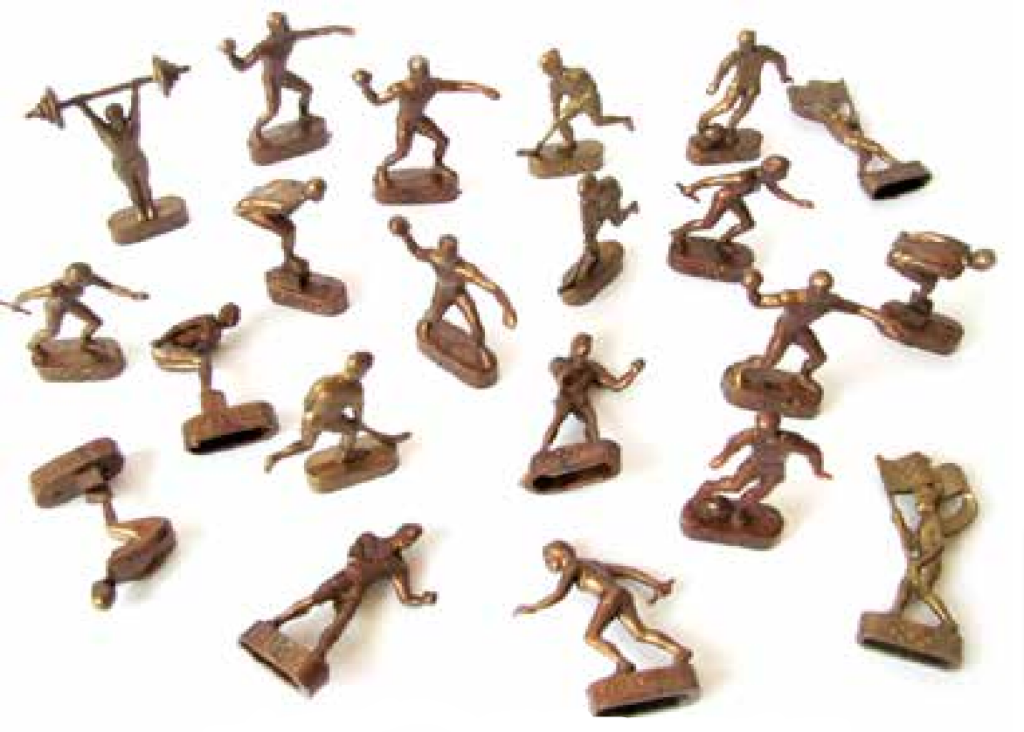
The focus so far has been mainly on metal figures (solid and hollowcast), but there are also many good examples of sporting figures produced in plastic. This includes commemorative figures produced to advertise and promote the Olympics, as well as many toys designed just to be played with.
Plastic Toy sports figures by Britains have already been mentioned, but other manufacturers produced such figures including Marx and many more. To deal with all these would require another article. Here we focus on advertising premia.
These include the range of figures recently offered for sale on eBay. These were produced for the Helsinki Games in 1952, and are shown in the accompanying photo. These are 3.5cm plastic figures. They included 4 handball players, 2 soccer players, 4 swimmers, 3 hockey players, 2 boxers, 1 weight-lifter, 3 relay runners and 2 Olympic flag bearers. This shows the range of figures available from such sets. This particular range were produced for the German Olympic Society.
The next few photos show more plastic figures made as advertising premia for Dextro Energy in the 1960s, again designed to commemorate the Games. These figures are also from Gisbert Freber’s collection. They are 7cm size and depict a range of Olympic sports, focusing on athletics.
Many other companies produced such advertising premia, indeed this subject could form a collecting category all by itself. In France, Café Martin released a range of figures in 1958 similar to those featured here covering sports such as fencing, shooting, martial arts as well as field and track athletics. These are featured in M. Broquet’s article referenced at the start of the present article.
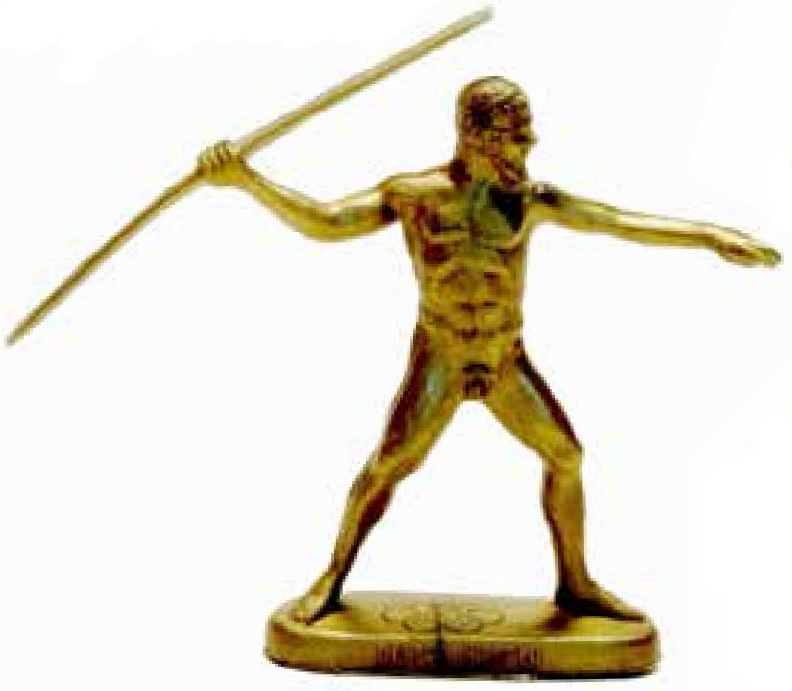
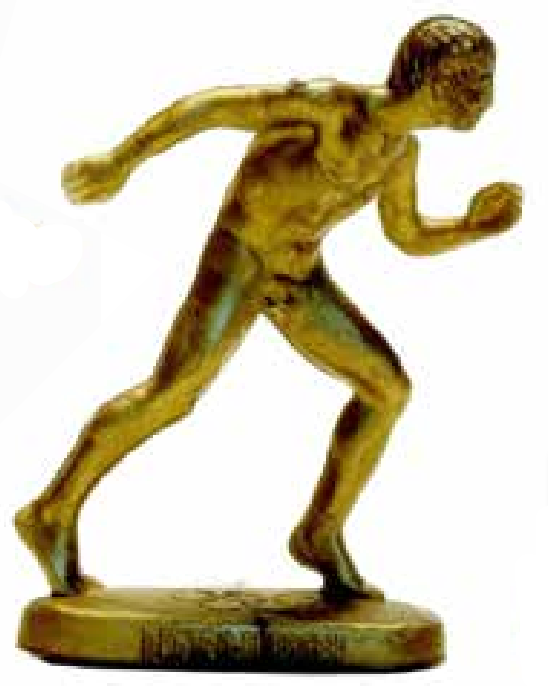
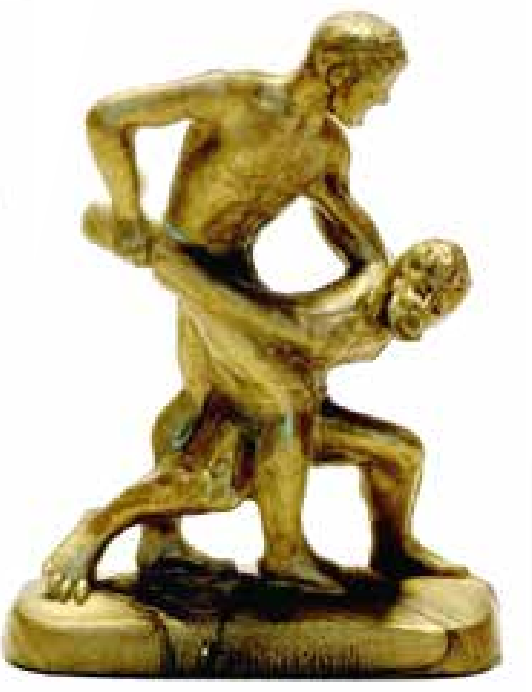
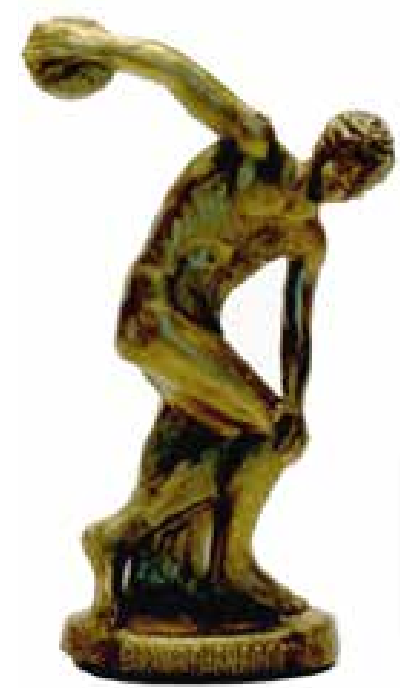
8. Connoisseur figures
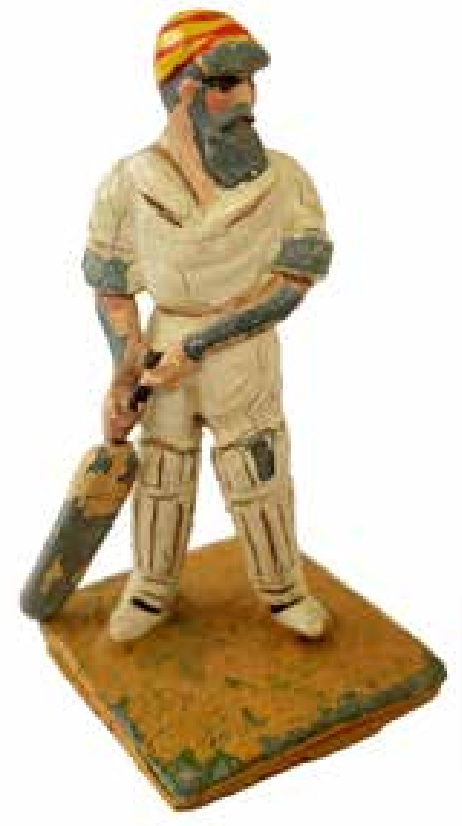
W.G. Grace by Frederick Ping
Finally, for those who prefer Connoisseur figures rather than toys, there are a few examples of sporting figures. One of my favourites from my own collection is the famous Cricketer W. G. Grace. Over 100 years ago he thrilled crowds by blasting cricket balls out of the ground with great ease. I acquired this figure as a gift from Pat Campbell many years ago. Pat knew I was a great cricket fan. In turn, I passed it on to Don Pielin who as soon as he clapped eyes on it, wanted to add to his own collection of sporting figures. Years later, when he came to sell his collection, he gave it back to me. This neatly summarises the camaraderie which characterises this great hobby of ours. You can see the many other sporting figures that graced Don’s collection online at the Live Auctioneers site.
This figure was made by Frederick Ping, a contemporary of Richard Courtenay. Ping is most famous for his historical figures, especially knights. But he also produced “one-offs” for clients such as Peter Cushing on commission. These included theatrical characters (a particular requirement from Mr Cushing), but also politicians and other famous people such as the sportsman shown here. W. G. Grace was the Michael Jordan of his sport at the turn of the 19th century.
9. Back to the Olympics
It is clear from this brief review that it is possible to build up a fairly comprehensive collection of sports featured in the Modern Olympics. If you are looking for a collecting challenge why not try to find examples of all the sports to be included. You have 4 years till the next Games!
The table presented here summarises what I have discovered so far. Thus far I have failed to find Beach Volleyball, Handball, Skateboarders, Breakdancers, Synchronised swimmers or BMX trick riders. Maybe they will all be available by the time of the next Games in Los Angeles in 2028? This will introduce Baseball and American Football as well as Cricket, so these are included in the table. If you know of any figures I have missed please let us know so we can update the table.
| Sport | Makers |
| Track and field athletics | CBG and many more |
| Gymnastics | French hollowcast |
| Swimming and Diving | French hollowcast |
| Martial arts (boxing, etc) | CBG and many more |
| Cycling | Various |
| Rowing | Heyde |
| Sailing | Britains, CBG |
| Equestrian sports | Britains and many more |
| Football (Soccer) | Britains and many more |
| Rugby | French hollowcast |
| Cricket | British hollowcast |
| Baseball | Cherilea and others |
| American Gridiron Football | Auburn Rubber |
Notes: These are the sports that are definitely to be found out there. And that’s not to mention Winter sports – but that’s another story!
